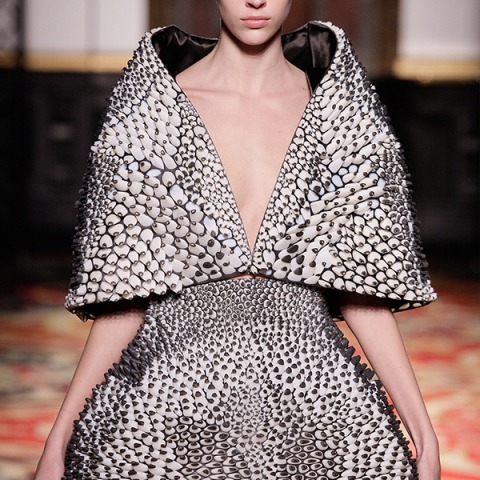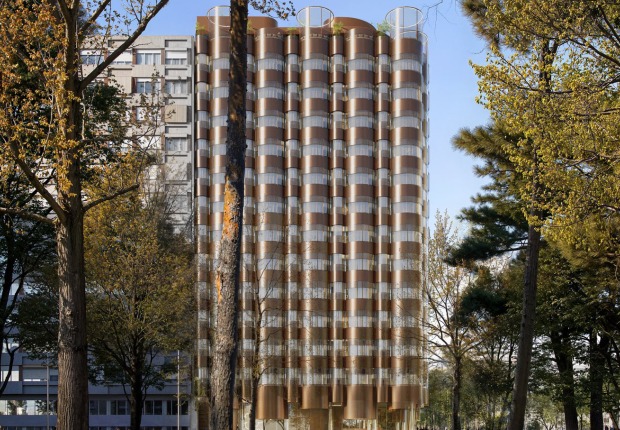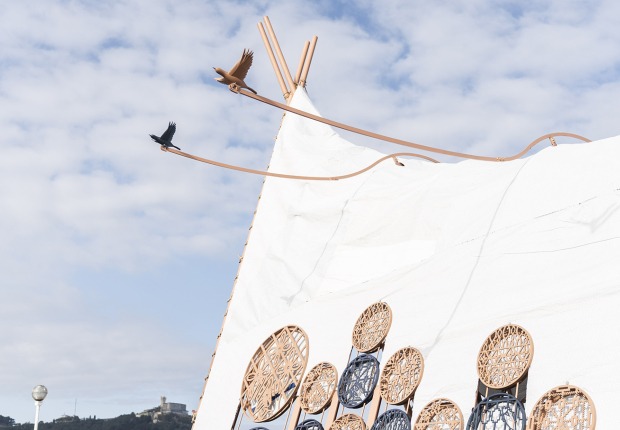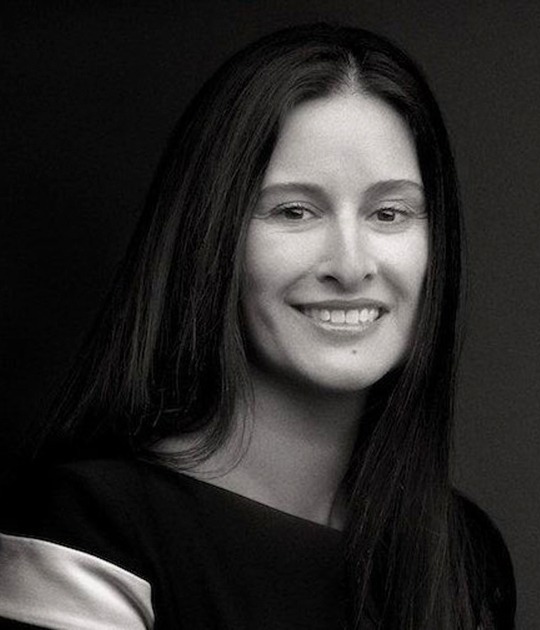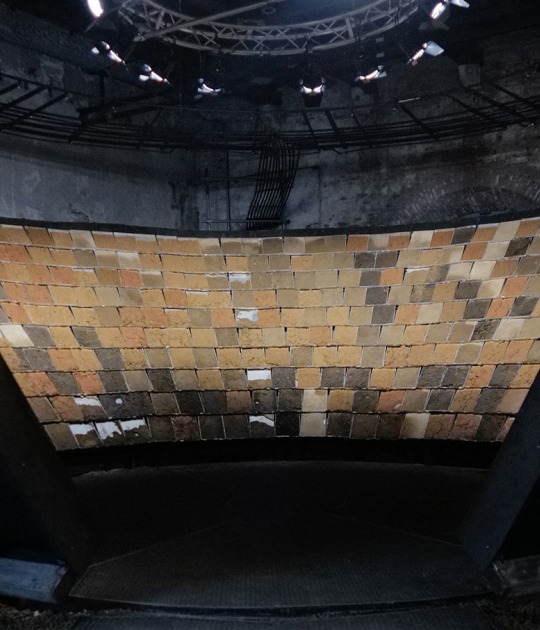Neri Oxman traia a primera página sus investigaciones sobre impresión 3D de edificios: 2Cinco principios de un nuevo tipo de arquitectura". esta semana saltaaba la noticia del proyecto de la primera propuesta de lo que podría ser el futuro de edificios impresos [Universe Architecture proyecta construir una casa con una impresora de 3D].
On Monday we experienced another first for multi-material 3D printing. For the first time ever, a multi-material 3D printed cape and skirt were featured on the Paris catwalk. Dutch designer Iris van Herpen debut at at Paris Fashion Week with two 3D-printed outfits made in collaboration with the Neri Oxman and Julia Koerner. Oxman teamed up with the Belgian couturier and 3D printer Stratasys to create a bubbled mini skirt and cape covered with special forms, trompe l’oeil seashells. Oxman explains that the joint venture is very much an extension of the series:
“This project has taken ‘Imaginary Beings’ to ‘Wearable Beings’, myths that one can wear. The original collection includes 18 Stratasys 3D printed prototypes for the human body inspired by Jorge Luis Borges' Book of Imaginary Beings. They are human augmentations inspired by nature; but not all wearable. For Iris’ collection at Paris Fashion Week it was important to take the series to the next level, thinking not only about form and materials, but also about movement and wearability. This was a new challenge for me and for my colleagues – Prof. W. Craig Carter (Department of Materials Science & Engineering) and Keren Oxman. It inspired us to design algorithms that could map physical movement and material behaviour to geometrical form and morphological variation in a seamless and continuous wearable surface.”
The 11-piece collection also included a flexible, harness-like little black dress designed with Austrian architect Julia Koerner and laser-sintered by Materialise. Julia Koerner, currently lecturer at UCLA Los Angeles and 3D printed by Materialise. Julia Koerner explains,
“My collaboration with Materialise for the 3D printed dress for Iris van Herpen's Haute Couture Show 'Voltage' 2013 reveals a highly complex, parametrically generated, geometrical structure. The architectural structure aims to superimpose multiple layers of thin woven lines which animate the body in an organic way. Exploiting computational boundaries in combination with emergent technology selective laser sintering, of a new flexible material, lead to enticing and enigmatic effects within fashion design. New possibilities arise such as eliminating seams and cuts where they are usually placed in couture.”
